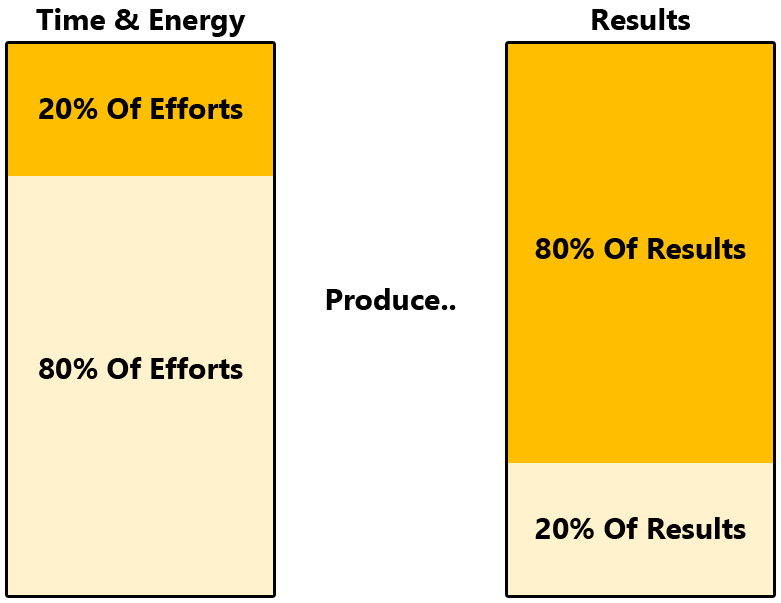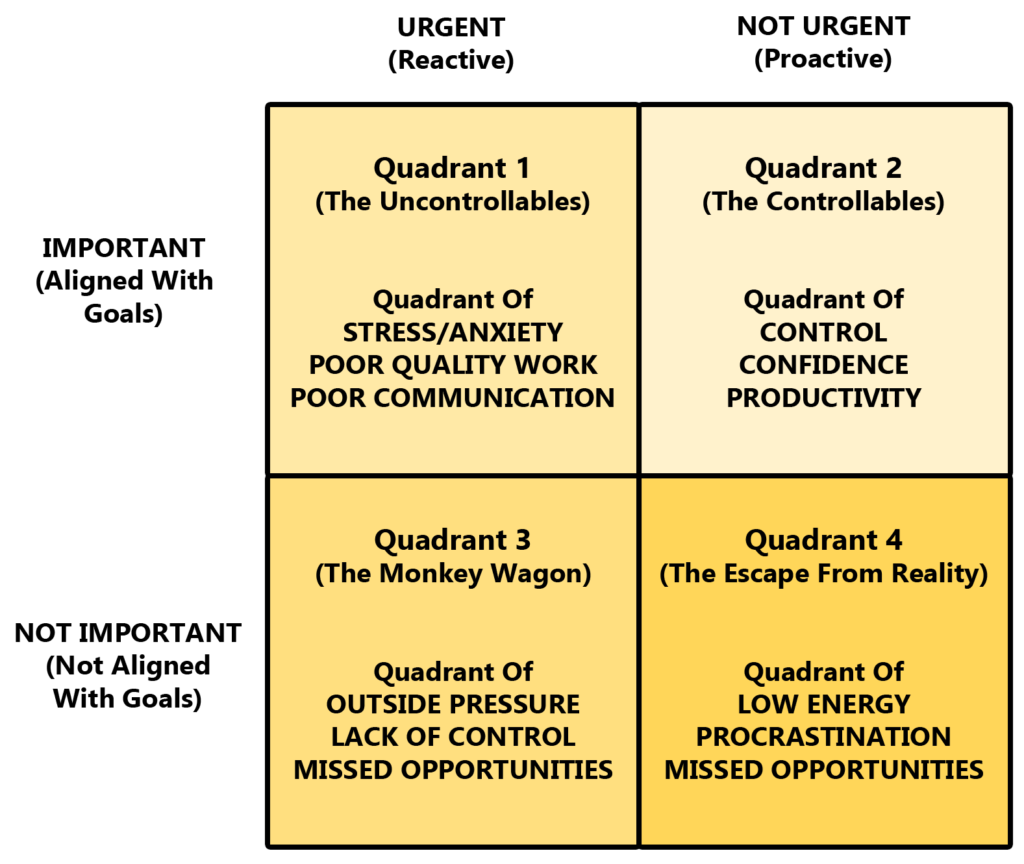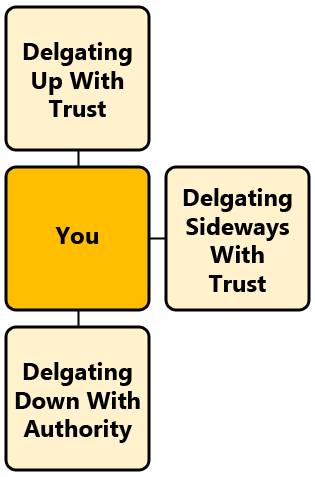The 8 Most Important Time Management Skills For The Workplace
You’re at work. The end of the day is quickly approaching and you glance at your to-do list.
Are you feeling confident and accomplished with what you’ve achieved, or are you wondering where the time went?
Regardless of how you might personally answer that question on an average day, everyone has space to improve their time management.
Doing so, as you’ve likely already heard, requires ‘working smarter, not harder’.
While this common workplace catchphrase is easy to say and widely known, taking action on it isn’t always as easy to do or as widely practiced.
The good news is, with a little guidance, working smarter is something that everyone can achieve, and doing so will have a tremendously positive impact on your career — both in the short term and as your success compounds over time.

To help you experience the full benefits of working smarter, we’ve compiled a list of the most important time management skills for you to master in the workplace.
The 8 Most Important Time Management Skills For The Workplace
If you struggle to get critical tasks done at work – whether due to distraction, forgetfulness, or even more commonly, a failure to accurately prioritize – your career will suffer.
You need to be seen as someone others can count on to get things done, or they’ll be hesitant to entrusted with valuable tasks.
To ensure others view you as competent, you need to develop your time management skills and make sure you’re focusing on the right work and making an impact that truly matters.
As a result, the respect of your peers will increase toward you and your superiors will be far more likely to consider your for roles with greater responsibilities.
The trust you build through effective time management can result in bigger opportunities being presented to you and ultimately help you advance your career quicker.
Now that you understand what’s on the line, here’s our list of the 8 most important time management skills for the workplace:
1. Priority Management
Priority management is the process of ensuring you’re doing the right things in the right order at the right time.
This is by far the most critical time management skill you can master.
If you have your priority management dialed in, you’ll only work on tasks that you should be doing, you’ll do them in the right order, and you’ll have a process to delegate or discard tasks that you shouldn’t be spending your time on.
Priority management begins by determining the true urgency and importance of each task.
Becoming proficient at priority management requires the ability to identify your governing objectives, leverage the Pareto Principle, and apply the Priority Management Matrix.
Let’s dive deeper into each of these now.
Determine Your Governing Objectives
You can’t prioritize effectively unless you first know what outcomes and objectives you’re prioritizing for. In the workplace, there are three levels of objectives to consider: Personal, Team/Department, and Organization-Wide.
Personal Objectives
At the most basic level, there are your own personal objectives.
These might include submitting your projects and tasks on time, becoming more knowledgeable in your area of expertise, and maintaining good rapport with your coworkers and management.
Team/Department Objectives
Beyond your own personal objectives you also have to consider your immediate team’s objectives, as well as your department’s objectives at large.
These objectives will relate to your overall team or department’s performance, such as improving the output of a critical deliverable that your group is collectively responsible for.
Organization-Wide Objectives
Finally, the highest level of objectives you’re likely to encounter will be your company’s regional and organization-wide goals.
These will depend on your company’s size and geographical distribution, but will primarily consist of financially-driven goals, such as increasing revenue, profit margins, and overall market share.
While you’re likely to have the most direct impact on achieving the objectives closest to you, it’s important to recognize all of the ways your role fits into the larger picture of your organization, so you can prioritize the highest value tasks and do them first.
Understand The Pareto Principle (The 80/20 Rule)
Once you’ve identified the governing objectives you’ll use in the prioritization process, you can begin to rank them in terms of their impact. This is where Pareto Principle – a powerful mental model for time-management – can elevate your efficiency to an impressive level.
The Pareto Principle states that 80% of your results are driven by 20% of your efforts. While this may sound like an extreme ratio at first, when you consider all of the tasks you do throughout the day, it quickly becomes clear that some tasks are more impactful than others.

Thankfully, this imbalance in impact between tasks can be used to your advantage. By focusing on high-value tasks while minimizing, delegating, or eliminating low-value tasks, you’ll be able to make a larger impact in less time.
This is an essential component of time management mastery.
Apply The Priority Management Matrix
Now that you understand the Pareto Principle – that some tasks are more impactful than others – it follows that you’ll need a process for distinguishing between high-value, high-importance tasks and low-value, low-importance tasks, so you can prioritize accordingly.
That’s where the Priority Management Matrix, shown below, comes into play.

The Priority Management Matrix forces us to ask two questions of every task:
“Does this task need to be done immediately, or can it be put off until later?”, and
“Does this task contribute to the achievement of one or more of my governing objectives?”
The first question determines the task’s urgency, while the second determines its importance.
Urgent and important tasks (Quadrant 1) must be completed first, but this is not the ideal quadrant to be operating in. This quadrant is associated with high stress, poor communication, and poor quality work because it is being completed under pressure of an imminent deadline.
If possible, you should attempt to operate in Quadrant 2 as much as possible. This is where you are doing important work at a reasonable pace without the pressure of an immediate deadline forcing you to rush. Here you will experience control, confidence, and true productivity.
2. Effective Communication
Communication breakdown results in a large percentage of the wasted time in the workplace. Strong communication skills will help avoid this wasted time and maintain positive working relationships within your teams.
Becoming an effective communicator as it relates to time management relies on your ability to convey and receive information effectively, say no to tasks that distract you from your goals, and delegate tasks that are better accomplished by others.
Convey And Receive Information Effectively
Successful communication depends on your ability to convey and receive information effectively.
The two most important forms of communication in the workplace are verbal and written.
Verbal communication can be anything from a 1-on-1 conversation all the way up to a large group presentation.
Written communication can be anything from leaving a sticky note on a colleague’s desk all the way up to crafting large and important emails and reports.
Conveying information effectively involves calculated speaking and writing.
You need to make sure that the message you intend to get across is communicated clearly. To succeed at this, it helps to be as concise as possible. You want it to be as easy as possible for the receiver to identify the most important and actionable parts of your message.
Receiving information effectively involves active (or conscious) listening and reading.
As you receive information, you’ll want to identify and address any gaps in your understanding early on. Failing to ask for clarification out of fear of appearing unintelligent will only set you up to look worse when your lack of understanding comes to the surface later on.
Learn How To Say No
Your success with time management greatly depends on your ability to avoid assignments that overwhelm your schedule and take your focus off your goals. This is especially true if you’re in a position where the tasks you’re being assigned are outside of your control.
In the case where you need to say no to an assignment because you lack the resources or bandwidth to take it on, you have a responsibility to make the assigner aware.
If the individual assigning your tasks underestimates the time you’ll need to complete them, you’ll end up missing deadlines or submitting rushed work. This is neither good for yourself and your goals or for the assigner and their goals. Everyone loses when you take on more than you can handle.
Instead, convey to them that you don’t have the ability to take on the new task. They’ll be able to decide if it should take the place of a different task on your list, be passed off to someone else, or simply be pushed forward to a later date when you have more time to address it.
If you need to say no to an assignment because it takes your focus off your goals, you should also make this known. Before you do so, however, you should consider if you’re missing a part of the equation. Perhaps you just can’t see how it helps meet the objectives of your team, department, or company as a whole. In this case, you should ask for clarification.
It could be that you have a different perspective than the individual assigning you tasks. Seek to reconcile the two perspectives to come to an agreement on whether you’ll continue to pursue or remove the task moving forward.
Delegate When Appropriate
When you find yourself responsible for a task that you feel would be better handled by someone else — either because you feel they’d do a better job or the task is more appropriate for someone in their position — you should attempt to delegate it.
While delegation is typically thought of as something reserved for those in a position of authority, in reality, delegation can take place horizontally to colleagues, and even vertically to superiors, depending on the nature of the task.
This can be better understood by defining two types of delegation: delegation with authority and delegation through trust.

Delegating with authority is when you leverage your rank and status within your organization to delegate tasks to others below you in the hierarchy. Delegating through trust is when you leverage your relationships within your organization to delegate tasks to others at your level in the hierarchy or even above.
For a full breakdown of the differences between delegating with authority and delegating through trust, as well as the steps to take for each, check out our course on Priority Management inside Growth Through Learning Academy.
3. Stress Management
Workplace stress can dramatically reduce your productivity. This will naturally make the process of effective time management that much more difficult to accomplish.
Identifying the sources of your stress and how much control you have over each of them will help inform the actions you can take to mitigate and even eliminate their negative effects.
Identify The Stressors
Before workplace stress can be addressed, it’s important to identify its source.
According to the American Psychological Association, common workplace stressors include: low salaries, excessive workloads, limited opportunities for growth or advancement, work that isn’t engaging or challenging, missing social supports, too little control over job-related decisions, conflicting demands, and unclear performance expectations.
While the list is just a start, there’s a good chance it touched on at least a few of the sources of stress in your workplace. Once you’ve identified the source – likely sources – of stress, you can create your plan to address them.
Identify Your Level Of Control Over The Stressors
For each of the sources of stress you identify in your workplace, you’ll need to come up with an action plan to eliminate or mitigate their effects on you.
Doing this successfully comes down to identifying the level of control you have over each stressor and then planning some appropriate responses within your ability to implement.
For example, if you’re stressed because you’re uncertain about the performance expectations your company uses to assess your personal contribution, you should recognize that you have the ability to ask your manager or human resources to clarify the evaluation criteria for you.
Resolve Or Mitigate The Stressors
Now that you’ve determined what you can and can’t control regarding your workplace stressors, it’s time for you to take the appropriate actions to address them.
This may include eliminating the stressors, setting boundaries to minimize the effects of the stressors, and developing healthier responses when stressors appear.
Often, by communicating the sources of stress to the appropriate individuals, you can get the help you need to mitigate their effects.
4. Self-Awareness
Self-awareness is key to understanding the effects your habits are having on your time management effectiveness.
If you aren’t aware of where you’re currently being inefficient with your time, you can’t expect to manage it effectively.
The following tips address the three most common issues that require self-awareness to overcome. They are: perfectionism, lack of structure, and underestimating the required time to complete tasks.
It’s our hope that by discussing these common issues and how to resolve them, we may spark an awareness inside you of other similar habits you may also need to address.
Overcome Perfectionism
Perfectionism can make you spend more time on tasks than is actually reasonable. While there’s nothing wrong with having high-standards, they can’t be so high that they become impossible to attain on a regular basis.
If your job involves producing some sort of deliverable, it should be done to an acceptable degree (the true 100% completion mark). If you submit deliverables at 110% of their requirements to suit your own perfectionism, but it takes you twice the time (remember the Pareto Principle), you’re actually cutting your productivity in half.
So, instead of striving for perfection in your deliverables, strive for perfection in your workflow – don’t spend any more time than necessary completing each task. Over time, the amount of time you save on each deliverable will compound and you’ll become a much more valuable contributor to your firm.
Use A Calendar
A large part of mastering time management is doing what you’ve planned to do when you’ve planned to do it.
Using a calendar and setting aside blocks of time for each task allows you to see when you’re on track and when you’re off track throughout each day.
In his bestselling book Indistractable: How to Control Your Attention and Choose Your Life, author Nir Eyal states:
“Only by setting aside specific time in our schedules for traction (the actions that draw us toward what we want in life) can we turn our backs on distraction. Without planning ahead, it’s impossible to tell the difference between traction and distraction.”
Additionally, placing important events and deadlines into a calendar means you won’t have to keep track of them in your head. The mental bandwidth you’ll gain goes a long way in helping you stay focused during tasks that require your concentration.
Include Buffer Time (But Not Too Much)
Giving yourself the right amount of time to complete a task is a skill that relies on your self-awareness. A great way to improve at this is to track the amount of time it takes you to complete different tasks.
For example, if you find that a certain task takes you two-and-a-half hours to complete, you’ll want to schedule 3 hours for it in your calendar. Having a reasonable, but limited duration to complete a task will mitigate Parkinson’s Law and allow you to keep control of your time.
(Parkinson’s Law states that work expands to fill the time available for its completion. In theory, this means that a one-day task might take you three days if you give yourself three days to complete it.)
5. Focus
Without focus, everything falls apart.
Achieving focus for prolonged periods of time involves avoiding multitasking, scheduling in time for focused work, and taking precautions to protect that focused time.
Avoid Multitasking
Multitasking has commonly been thought of as doing more than one task at the same time. In reality, the multi-tasker is not capable of this and is rapidly alternating between tasks instead.
Each time a multi-tasker switches from one task to another, inefficiencies are introduced. These inefficiencies, known as ‘switching costs’, can result in up to a 40% decrease in your productivity.
Constraining yourself to take on one task at a time will prevent this unnecessary productivity loss and save you from potentially hefty time management penalties.
Schedule Time For Focused Work
The most productive people intentionally place themselves into a ‘flow state’ in order to get more done.
This flow state is also known as ‘being in the zone’, and occurs naturally as you work on a task for an extended period of time without interruption. Since it can take upwards of 25 minutes of active and conscious work to enter into this state, it’s critical to avoid any interruptions that might break you out of it.
The best way to experience this flow state on a regular basis is to “timeblock” two hour periods in your calendar. These will allow you to work on just one task for the entire two-hour duration, without getting distracted. Work that might have normally taken you three hours to complete may now only take one.
Take Precautions To Protect Your Time
Scheduling time for focused work will only be effective if you’re able to stick to your plan.
This will require you to protect your time in order to avoid becoming interrupted by others asking for input or favors. Protecting your time can be harder if you’re currently in a more junior role at your company, but there are still steps you can take.
For starters, you should transition slowly to avoid conveying the message that you’re completely isolating yourself from others. Begin by protecting one hour of your time per day. Let others know of your plans ahead of time and ask that they avoid coming by your desk during your allotted focus time.
As you, your colleagues, and your boss begin to notice and benefit from your increased productivity, you can request that your uninterrupted focus time be increased to two hours per day. While the nature of your job may not allow for more than two hours of protected time each day, setting aside these two hours is already enough to see a massive improvement in your productivity, and as a result, your personal time management effectiveness.
6. Proactivity
Proactivity is the opposite of procrastination.
Proactive employees are known to contribute and innovate more than passive employees, and generally perform better overall.
A few ways you can find success with proactivity are to understand when you should be proactive, when you shouldn’t be proactive, and how thinking about your company’s future can guide your efforts to produce results with greater impact.
Understand When To Be Proactive
Knowing whether or not you should start a task early depends on your confidence that you will meet the expectations of the person who would otherwise give you the green light to begin.
If it’s a task you’ve done before, the expectations are clear, and you don’t have any more-pressing tasks to take care of, you should go ahead and start on it.
Understand When Not To Be Proactive
Taking proactive action when you’re not 100% sure it will be well-received can backfire.
If you undershoot expectations, you may need to redo part of the task, which may result in a time management penalty rather than a proactive victory. Likewise, if you overshoot expectations, you will have put in more time and effort than necessary.
Think About The Future Of Your Company
Consider your company’s trajectory and what their goals might be in one year, three years, and five years. Seek to understand how you might fit into those plans, and which skills you will need to gain along the way.
This will help you continue to prepare for the next stages of projects, organizational changes, and your own career.
This is a very long-term time management strategy, but you might be able to add value that makes three years worth of progress in two. Results like that are typically well rewarded.
7. Relationship Management
Relationship management will be one of the driving factors behind your career success.
You can see the greatest benefits by helping others with high-impact tasks, seeking opportunities to collaborate, and applying Triangulation to quickly resolve any conflicts that arise.
Help Others With High-Impact Tasks
As opportunities to get involved with high impact tasks appear you should take them. This applies even if it means playing a supporting role.
Not only will you be making progress toward your own governing objectives, you’ll be building trust and influence with others by helping them achieve their goals.
Seek Opportunities To Collaborate
Rather than taking on an entire task, consider how you can collaborate with others on tasks where each of you is responsible for the components of the task that match your unique personal strengths.
Once again this helps both you and them reach your goals, contribute more value to your organization, and strengthen your professional relationships at the same time.
Resolve Conflicts With Triangulation
An important factor in building strong relationships is quickly addressing any conflict that might cause them to fall apart.
Emotionally-driven conflict in the workplace can turn an otherwise straightforward task into a long, drawn-out process if not handled professionally. While there are many helpful conflict resolution strategies, the most effective in managing workplace relationships is Triangulation.
Triangulation involves shifting the conversation from a “Me vs You” dynamic to one of “Us vs It” (where “It” is the problem that needs to be solved). This strategy sets personal conflict on the backburner and makes the problem solving process objective, rather than emotional.

By applying Triangulation to relational conflicts in the workplace you can emphasize that you’re working toward common goals, avoid unnecessary drama, and save a lot of time in the process.
8. Leveraging Technology
There’s no escaping it. The pressure to embrace the incredible power of computers will only continue to increase as more people begin to leverage technology to improve their personal time management. If you fall behind here, you’re going to fall behind in general.
Instead, you’ll want to keep yourself at the forefront by committing to continual learning and looking for ways to automate your work without becoming overwhelmed by the process.
Commit To Continued Learning
Opposing change isn’t going to stop it. To avoid falling behind, you’ll want to keep yourself up to date with the latest innovations in technology related to your field.
In addition to being a great move for your career in general, this will also allow you to be the one suggesting technology that your firm might benefit from. In turn, this will increase your value to your organization as you provide insights on ways to make your entire team, department, or organization as a whole more efficient.
Look For Opportunities To Automate Non-Creative Work
Tasks you repeat frequently, and tasks you perform on a regular schedule are great candidates for automation. Study available automation technology to gain ideas on how you can apply them to your reoccurring tasks.
Similarly, use templates as much as possible. This can include presentation templates, canned responses for emails, and even frameworks to guide your in-person meetings. All of these will add up to save you significant effort over time.
Don’t Allow Yourself To Become Consumed With The Tech
Following the last section, we need to add a disclaimer: Discovering new automation technologies and applications can be a good thing, but getting caught up in the technology can consume more of your time than it saves.
Don’t try to automate everything. Especially things that require creativity. This will greatly over complicate the process and cause others to question whether or not your introduction of automation is truly beneficial.
Next Steps
We hope you found this article helpful.
If you’d like to dive much deeper into priority management – the most critical time management skill you can master – including gaining access to our step-by-step process, we invite you to consider investing in a membership to Growth Through Learning Academy, where you’ll gain access to our full Priority Management course.
The course will take your understanding of priority management to the next level with insightful video lessons, quizzes, and exercises all designed to increase your confidence and take your career to new heights.
Sign up for the Academy today and receive instant access to our entire library of courses on consultative sales, business development, personal branding, and priority management.
